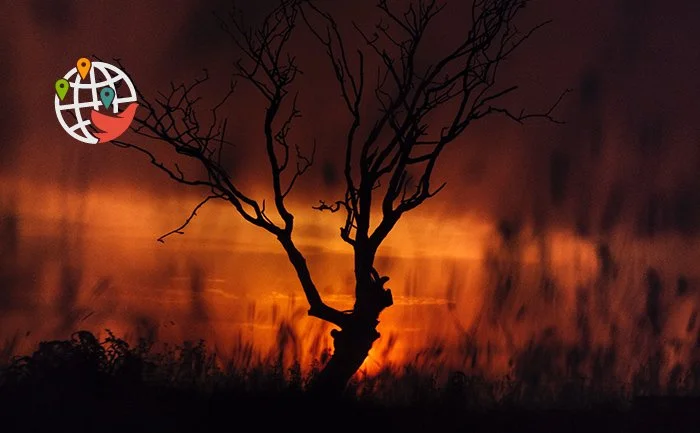Canada's wildfire season is far from over

Authorities are predicting that Canadians are in for many more weeks of fire activity.
Canada's most destructive fire season, which has already scorched more than 13 million hectares of land, continues. What's more, country officials anticipate above-average fire activity will continue throughout August and September across large areas of the northern and western country.
At a briefing Friday, Michael Norton — director of the Northern Forestry Centre at Natural Resources Canada — said the reason for continued fire activity into early fall will be the same drought that caused the record wildfire season. In some regions, rain has helped reduce the number of fires, but Norton predicts wildfires will still be "very active" in British Columbia, the Northwest Territories and the Yukon.
"In September, we anticipate that the potential area at extreme risk will become a bit smaller, covering southern B.C., Prairies, part of the Northwest Territories in Western Ontario. In much of this region, the number of new fires starting will taper off as we move through September later into fall. It's important to remember, however, that large existing fires will continue burning, and new problematic fires can occur anywhere…and it is likely we will experience significant fire activity for many weeks yet," Norton told us.
As of August 10, 5,593 wildfires have burned 13.4 million hectares of land. This is an area larger than the total area of the three coastal provinces. The wildfires have also forced the evacuation of more than 167,500 people nationwide, and 4 firefighters have died doing their duty.
"As a bit of a comparison, the total perimeter length of this year's fires so far would stretch more than 90 per cent of the way around the equator," Norton shared.
Carbon emissions from the 2023 wildfires exceeded one billion tons of carbon dioxide equivalent, equal to the emissions of 306 million cars.
According to Natural Resources Canada and Environment and Climate Change Canada, every region of the country experienced a particularly intense wildfire season this year, with flames breaking out even in places not normally associated with heavy fire activity. For example, in Nova Scotia.
Brian Simpson, head of wildfire intelligence at Natural Resources Canada, told reporters on Friday that the national average fire activity has increased this year due to several provinces.
"The province with the most area burned is Quebec, by quite a very wide margin. IIn June, dozens of wildfires in Quebec generated enough smoke to prompt air quality advisories in central and eastern Canada, as well as large swaths of the United States," Simpson shared.
That same July, the Donny Creek River fire in northeastern British Columbia was recognized as the largest wildfire in the province's history.
"INorthwest Territories, B.C., Alberta, and Saskatchewan have all had really large areas burned as well. And in the case of Northwest Territories, Yukon, and B.C., those are still very actively burning," Simpson added, also noting that the number of active fires in British Columbia is close to 400.
Throughout this unprecedented fire season, Canada has relied on the help of international partners: Australia, Brazil, Chile, Costa Rica, France, Mexico, New Zealand, Portugal, South Africa, South Korea, Spain, and the United States. According to Michael Norton, Canada has enough capacity to survive the rest of the current wildfire season and prepare for the next one. That's why firefighters from other countries are returning home. Canada has the capacity to fight fires on its own thanks in part to federal investment in wildfire fighting. In the 2022 budget, CAD 256 million has been allocated over the next 5 years for equipment and another CAD 28 million has been allocated over 5 years under the Fighting and Managing Wildfires in a Changing Climate Program.



















